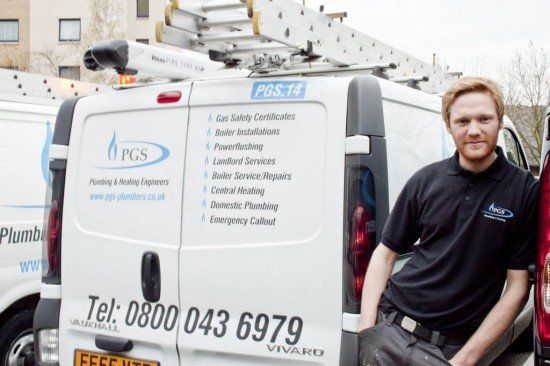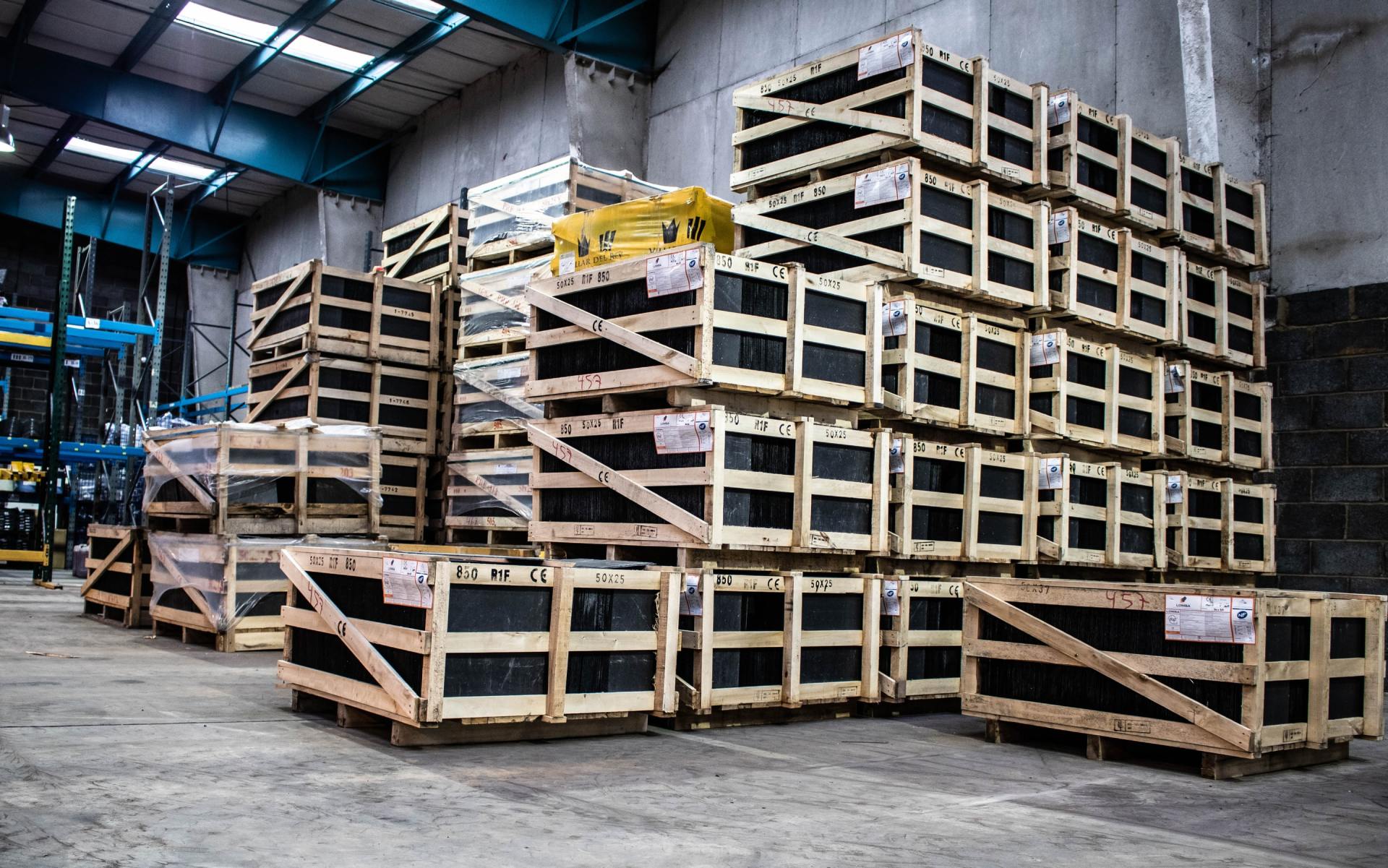Find out how MobileMax® Cloud can help you work from home.
LEARN MOREStreamline Your Heating & Plumbing Business
1-2 Mobile Ltd was first launched in July 2001. Since then customer relationship management software has undergone significant development and improvements with the help and support of many of our customers.
MobileMax® Cloud - helping you access your CRM from home.
Office
With MobileMax customer management software, you can improve customer relations, organise engineers and handle payments
Road
With the MobileMax customer management you get instant notification of job changes and full customer history at your fingertips
Site
Order parts and produce estimates and certificates on site using the easy to navigate MobileMax customer management

With the lockdown and no date yet when things will change, many heating and plumbing businesses have all or part of their staff working from home offering 'essential' works only. Working from home is a way of life coveted by many people, but it requires a good dose of self-discipline if you want it to be profitable and sustainable over time. For those staff member who are not use to operating in this environment it can be initially challenging. So, here at 1-2-Mobile we prepared a top 10 list that we are sure will help. Now, we know that some of our advice may not be possible due to space restrictions or rooms in your house. But, take our advice in those tips that are possible. Also, we do appreciate that employees will be multi-tasking with home schooling, food shopping or any other essential duties.

You likely already know how to run your heating and plumbing company, but do you have the knowledge or experience to take things further and enhance the profitability of your business? Here at 1-2-Mobile Ltd we speak to many business owners who have a clear strategy an objective about how they will become profitable. Although, there are those other people who do need help and support. You may be comfortably covering costs and meeting your annual targets, but on the other hand, do you know what aspects of your business could be causing unnecessary expense? Have you considered which processes you could streamline to save money? Thankfully, there are answers to these queries and with just a bit of insight, you can take steps to not only make your plumbing business more efficient, but also work to make it more profitable. We’ve put together a list of five knowledge-based resources—and some practical tips—that can help you bring in the dough...dosh, cheddar, cash, or moolah (depending on your preferred slang): 1. Focus on the figures that really matter Like any responsible manager or business owner, you’ll be aware of your monthly, quarterly, and annual financial results. While that's great for tracking the past, they often provide too few clues about where to take your company in the future. It’s useful to realise that the figures which really matter aren't just those tied to the £ sign. Important figures also include timings, dates, and more. They're important because altogether these figures can provide answers to questions you need to be asking about your business. Questions like (but not limited to): “Which job types and which engineers are the most / least profitable?” "How much time are we spending on admin tasks?" “How much time / money am I spending on travel and transportation? Is it more than it should be?” Some of these answers may lead you to make tough decisions about your staff or customers. For instance, you might want to stop acting on jobs that take you far away from your usual service area, as realistically, they're not cost effective. However, if the latter of the questions is true, why not think about investing in “green” vehicles? With hybrid and electric cars now more viable than ever you could potentially save £1000’s over the next few years and even attract new business from the growing market of environmentally conscious consumers. Ultimately, when thinking about profitability, your focus needs to be not just into next month, or next year, but further. You may have that friend who talks about their “five year plan”—you may even have one yourself! Whether that’s true or not, you should seriously consider having one for your plumbing business. Some of the targets above could even become part of your plan. 2. STOP and take time to analyse your business Understanding profitability can be more complex than it first appears. To make sure you’re understanding your business well you need to look at it from every angle—this is what taking a holistic view means. From administration, to engineers, from stock control, to payroll, and beyond: these are all sorts of things that can and will influence your profitability. For instance consider journey times: you may not have thought about how this metric can affect your finances. However, if it looks like engineers are taking too long to get to a job and you’re not sure why (it could be traffic, it could also be laziness) there are solutions (like GPS tracking) that can provide insight. Having this information will then allow you (or your staff) to better manage aspects like job distribution, optimising travel time, and potentially get your engineers to attend more jobs. In this instance, statistical knowledge is power: without it, you won’t be able to start making improvements and may miss out on new revenue opportunities. Another suggestion that dives a little deeper is for you to consider the parts you’re buying. Yes, you may be buying them at a good price and make money on mark-up, but what if those parts have a high failure rate and your engineers have to go out on (unpaid) recalls to put things right? As well as costing you, it will also negatively affect you customer’s satisfaction and can negatively impact retention. What appeared at first to be a money-spinner, could actually cost you a whole lot more... 3. Cash flow is KING Poor cash flow can cripple an otherwise successful business. If you always seem to have less money in the bank than you think you should, it’s a good idea to ask “why?”. In all likelihood, you have an issue (or more likely, several issues) with your invoicing and credit control processes. On top of this, poor stock control or supplier management can lead to excess funds being tied up in inventory. This might be obvious from a trip to the warehouse, but you won’t be able to take effective action to correct the situation without detailed knowledge. With better insight into parts management you will also be in a better negotiating position with your suppliers. With that in mind, consider if your job management software allows you to easily manage as much of your plumbing business as possible (if not all of it), including invoices and payments as well as stock control. This all ties in to how you should take a holistic view of your business. Only by understanding the big picture (and seeing it clearly) will you be able to make well-informed decisions that increase your cash flow and profitability. 4. Wipe the slate clean (clear your debts) While yes, this is easier said than done, you’ll likely know just how much of a burden interest payments can be. Most plumbing companies (amongst other field service businesses) could do more to reduce their reliance on bank loans and other sources of credit, so here’s a few ideas to help out: First, get an accurate picture of your financial situation and make a sensible decision for prioritising debt repayment i.e. tackle the highest-interest debt first. Otherwise, it’s just going to pile up year-on-year. If your business is going through a tough patch (and everyone’s will), talk to your creditors, they may be able to help. Next, make sure you can keep your end of the bargain on any new repayment terms—if you default, that will make future loans more expensive as your credit rating suffers. At the same time, you should be looking for sensible ways to cut costs and free up cash. Most companies can identify equipment that's no longer used and sell it off: even as scrap, that’s better than leaving it in storage as useless clutter. You’ll be far more likely to secure better repayment terms if you can demonstrate a thorough understanding of your company’s current situation and an action plan to turn things around. You can put everything we’ve covered so far into practice to give yourself the best chance of staying on top of debts. 5. Improve Your Customer Communication Timely communication with your customers will boost revenue and with the right knowledge, it’s not difficult to automate some of the processes either (there are a bunch of other tools that can help as well). Service reminders are perhaps the best (and simplest) tool to help grow in this way, but you should also consider channelling other communications methods, like online reviews.

Your current clients are extremely important. They're already paying you for products and services, whether this be for a new boiler or an annual services. And, they are likely happy with your offerings, especially if they've been long-term customers. If you aren't marketing to existing customers, you're missing an easy, low-cost source of making more sales. Getting more business from existing clients doesn't have to be a difficult chore. Many heating and plumbing businesses spend money every month on lead generation, whether this is google Adwords, sponsored posts on social media or advertising in the local newspaper. Learn how to increase revenue from existing customers with these seven easy steps. 1. Add value You can add value to your products or services by sharing your knowledge with your client. You can provide resources that will help customers use your service or related information to help them better their businesses. Perfect tip for this team of year is frozen condensate pipes, as many homeowners encounter this problem. Youtube provides many 'how-to' guides, on basic fixes that will keep your customer happy and appreciative of your support. You might do something as simple as sending regular email newsletters. You could start a blog where clients can read and search for information. Or, you can offer larger resources, such as PDF guides and ebooks. When you share your knowledge, your customers will trust you more and begin to see you as an authority in your subject matter. As they respect you, they are more likely to stay with your business longer, purchase more, and improve your business's bottom line. 2. Build relationships Every customer should feel like they have a special relationship with you. Get to know each of your customers. What are their problems? What solutions do they need? What stresses them? You can mention the things you learn about your clients to build one-of-a-kind connections. When you reach out to clients, use personalisation. Don't use generic templates or scripts. Cater your words to each person. For example, if you're talking to a customer on the phone, you might mention a particular problem they had. Your personal connections will make your clients feel known and cared for. They will want to stay with your business because of your personal touches. And, selling to existing customers is easier when you know what they need. It can be difficult to remember everything that every customer says. Store notes in your CRM . You can pull up the notes when you're communicating with your clients. 3. Stay organised When you are disorganised, you are more likely to forget clients and information about them. Using a CRM and contact management software can help you keep track of your contacts. A CRM can organise your clients and their information. You can create notes about each client. You can also organise customers into groups based on what type of customer they are. The CRM lets you set reminders to reach out to clients. You can create emails in the CRM and send them out to groups or personalise them for individuals. The CRM will keep a record of your communications so you don't forget the last time you contacted a client.

If your heating and plumbing business is starting to grow, you will likely rely too heavily on spreadsheets and email to lock in all your customer data. But is this method really working for you and sustainable? CRM (or Service Management System) lets you take back control of managing customer relations, key communication, job management and your sales process all while staying focused and in complete control If you are not getting these results from your current system (possibly via a spreadsheet), maybe it’s time for you to consider a CRM for your heating & plumbing business. We’ve compiled a list of seven challenges that customer relationship management software can help you overcome. Do any of these scenarios sound like some of the obstacles that happen in your business: You’re Far From Organised It’s tough to remember every customers conversation...did they say '2 or 3 TRV's'!!! Your desk is covered in sticky note reminders or a cork board cluttered with business cards and 'things to do' isn’t a long term solution. If you’re digging through your email messages, then finding the information you need is taking you twice as long as it should. Or, worse, appointments and meetings get missed, that are normally not the best way to retain customers. A CRM compiles all your company information systematically as you’re collecting it. That means you stay organised, structured and ahead of the game so planning becomes easy to manage. Your Spreadsheets Are Too Hard to Read When you first started tracking and recording your customer data, you recorded basic qualifiers like name & contact information. But now your business is growing and so is the column count in your spreadsheet. More data is relevant to making the sale, but accessing that information is frustrating. Was the house detached, how many bathrooms did it have...what was the location of the boiler etc etc At the start the simply 'CTRL F' would find the customer information you need, with so many permutations in data your spreadsheet system is no longer effective. CRMs are designed to be instinctive so that locating customer data is quick and painless. No more scrolling. No more squinting at what you wrote. You’re Losing Leads Important data, such as when to follow up with a potential customer, gets dismissed simply because you don’t have the time to enter it in your spreadsheet. What's more frustrating is that your marketing activity to get the lead, will have cost your time and maybe money. The heating and plumbing sector in the UK is very competitive and a lot of consumers will measure your time keeping (or if you even turn up) as a decider on whether they a) use your services again b) refer your business There are too many risks to putting this off. You lose important customer information. Your employees aren’t on the same page. Your customers aren’t happy with their customer experience. Ultimately, your company loses customers and potential sales. CRM makes it easy to enter your customer data as well as clearly spell out when to follow up with potential buyers. Grow your customer relationships, not your forever to do list. You Can’t Create Valuable Reports Now, some engineers or business owners may say 'I don't need a report...I know how to control my business'. WRONG! But that's for another blog. Compiling sales reports by plugging in rows of numbers into custom made charts and graphs takes time away from what you really need to do. Sales reports are crucial. But what value do they bring if your reports don’t pull data that you can analyse and apply to further your sales goals or strategy of the business. You should be able to fully analyse your data and create actionable goals from your reports. If you can’t, then it’s time to expand your data collecting process. CRM can create bespoke reports based on your customer data, allowing you real insight into your customer behaviour, sales margins and company campaigns. You Can’t Stay in Touch When You’re Away From The Office It’s not easy to access and enter data into spreadsheets when not at your desk. But you can’t press pause on your business simply because you’re out of the office. A lot of engineers are small businesses and as well as managing the business, they will be out fitting combi's. That’s where a spreadsheet system limits you. If an important customer calls while you’re on a install, getting immediate access to your customer’s details is challenging, if not impossible. You simply can’t be as effective with your customer data when you’re away. CRM not only lets you access and update customer details from any smart device as well as let your team instantly view your updates back at the office. That means you always stay connected and updated. Your Team Is Growing A growing team is a sign of growing business. But it also changes how you run your heating and plumbing company. With more employees, your customers are more likely to have conversations with more than one team member. Your employees need to have access to all customer interactions and data so that calls and follow up communication go smoothly. A spreadsheet is a great start to snagging customer data, but it’s not built to nurture team collaboration on customer communication. CRM lets your teams collaborate together on a lead, a campaign or a support ticket alongside your customer data. Multiple emails and file forwarding not needed. Your Wish List Is Getting Longer You say, “wouldn’t it be great if we could ___?” more than “it’s so great that we can ___.” Wouldn’t it be great if you could have your contacts organised in groups? If you could apply a bulk action to specific customers? If you could automate certain email responses? If you daydream more about what you wish you could do with your customer data rather than actually having the capacity to do it, then you’re ready to migrate your system to CRM. Your Next Steps.... If this sounds like your heating and plumbing business, then here at 1-2-Mobile Ltd we are here to help. We are working with 400+ heating and plumbing businesses across the UK, helping them provide structure, organisation and communication for their business.

If a homeowner’s drain was clogged in 1998, she’d open the phonebook and choose a plumber based on a friend’s recommendation or a print ad in the yellow pages. Today, life isn’t so simple. That same homeowner logs onto Facebook to ask for referrals, clicking through as many websites and profiles as it takes to find the provider that best meets her needs. If you want her business, you need to meet her where she is: online, on social media. Sites such as Facebook, LinkedIn and Twitter aren’t just for sharing family photos; businesses use them every day to increase reach, build name recognition and proactively manage their reputations. And while success at social media marketing requires some commitment, it doesn’t have to take all your time or energy. If you follow a few basic steps, it’s one of the best ways for your plumbing or drain cleaning business to communicate with current customers and attract new ones — on a budget. Step 1: Know your audience Social media should be about the customer’s wants and needs, not your own. Knowing whom you want to communicate with should guide how, when and where you engage with them. Spend a little time thinking about your ideal customer. Are you working for individuals or business clients? Where do they live and work? How old are they? What financial resources do they have? It may seem obvious, but asking these questions can help you choose a platform, create posts and fine-tune your message. Step 2: Pick the right platform Different social media platforms are intended for different purposes. While most sites can share different kinds of content, they each have a different personality and user base. For a small business, keep in mind that Twitter’s 280-character limit is ideal for companies that want to share quick tips and ideas on a regular basis. LinkedIn is a great tool for people who enjoy networking and have a lot of business customers who turn to them for advice and recommendations. Users are also wealthier and much more likely to hold college degrees. Facebook allows for more varied content and closer community building. It’s also the best place to reach older users, like baby boomers. YouTube can’t be beat for sharing how-to videos. Before you create an account on every social media site available, decide where you’ll get the most bang for your buck, and master it. Step 3: Share relevant, quality content Give your followers a reason to stay connected to you by sharing a variety of quality content. Studies have shown that people pay more attention to posts with images or video, so incorporate visuals into your posts. As a rule of thumb, quality posts educate, engage or promote. Educate Educational content gives your followers valuable information and establishes you as an expert in your industry. What kinds of questions do your customers ask? How-to videos, blogs or lists of tips are good ways to approach industry-related topics. Promote Share current deals, announce contests, publish pictures of your work or equipment, and post customer testimonies. Always include a call-to-action — a link to your website, an invitation to a special offer, or any other way to get customers to interact with you. Engage Posts should also entertain your followers and show your business’s personality. If you want to be known as a no-nonsense type of company, you might include fun facts or motivational quotes. If you want to emphasize that you are a family business, share personal successes, spread holiday greetings or mention names of your team members. Step 4: Post regularly Companies spend millions of dollars a year tracking when and how often they should post on social media platforms. As a small or mid-sized business, however, your most important takeaways are consistency and quality. Sharing one interesting post is better than sharing three mediocre ones, and reliably posting every other week is preferable to blitzing your followers with 10 posts in one week, then going silent for the next four. Take an honest look at what works for you, make a plan and stick with it. Step 5: Be smart about paid advertising Although posting on social media sites is free, each site has options for paid ads and boosted posts. So why should you pay when you can post as much as you want at no cost? Paid advertising reaches your audience more effectively than typical posts do because platforms allow you to strategically target specific types of people, including those who are not current followers. For example, you may choose to display ads based on users’ location and interests. Sites also allow you to measure how effective your paid posts are by showing how often people see and click on them. If you discover something isn’t working, you can tweak future posts to be more effective. Social media ads are often inexpensive to buy and create so don’t be afraid to give them a try. A quick search will direct you to easy, more in-depth suggestions for building out your social media ads. Step 6: Be social Above all, the key to success at social media is being social. Share and like posts by other users, and create content that will help start a conversation with your customers. Follow online messages and answer questions for someone in a plumbing bind. Join groups online and join in on the conversation; soon enough someone will need your services and reach out for a paid gig. This social mindset will help you get the most out of your social media accounts, whether you use Twitter or Facebook, share holiday photos or demo videos, use traditional posts or invest heavily in paid advertising. A smart company that carefully maintains its profile can improve relationships with current customers, forge connections with new ones and raise the bottom line.

What holds a plumbing business back from dominating their local area? Poor customer awareness, of course. Heating & Plumbing is, without a doubt, a competitive industry across the UK. Companies are constantly trying to one up each other through pricing and flexibility, working hard to win customers through – preferably – word of mouth. BUT, just like any business, marketing plays a huge role in the growth of a plumbing company and to stay ahead you will need a unique strategy. So, the pressure’s on, where do you start? Here’s 5 ways to advertise your plumbing business. 1. Brand: A good logo is essential Your logo is one of your BIGGEST advertising opportunities. Your logo is likely to be what your customer see’s when thinking about you. Your logo can represent quality, reliability or value for money. The best logo for a plumbing business will likely combine all of these. Your logo is important because it will be plastered across all advertising formats. It will be how a potential customer recognises you and it must therefore represent you effectively. A good logo goes a long way to growing your business. Your logo is one of your BIGGEST advertising opportunities with new & existing customers” quote=”Your logo is one of your BIGGEST advertising opportunities with new & existing customers 2. Web: Get online and reach your potential customers It is common now for plumbers and other tradesman to have their own website. Usually, these are small brochure websites with around 4 – 5 pages. This type of website is perfect for a plumbing business as it will detail all vital information to a potential customer; areas serviced, contact details, and testimonials. With a website your chances of finding new customers will more than quadruple. Potential customers also like the ability to check out a company on their own terms, so ensure your client testimonials are easy to find. 3. Print: Vehicles Plumbing requires a lot of tools. So, you will have a vehicle or two to transport them. Vehicles such as vans are a perfect advertising opportunity for plumbers and other tradesman as the van is associated with trade. The bonnet, sides and rear of your van should all have your logo on. This will raise brand awareness in your local area. It should also have in a large font your telephone number, email address, and a QR code to your website. you can find a list of Vehicle wrapping providers here 4. Personal: Uniform Plumbing is a difficult job and it can take hours to complete a smaller project. At some point, you will need to leave your project to get food, drink or tools – this is where the uniform comes in. Your logo and name on your shirt will make you instantly recognisable to the public and potential customers in the area you are working. Adapt on this by having a sentence printed on the back such as ‘I’m a plumber, do you need help?’ and a telephone number. If you do not have a uniform provider you can easily find one at a very reasonable cost by searching Google – Click here to use a search term that we recommend 5. Search: Directories The Yellow Pages is a handy tool and something which 99% of homeowners and businesses have. However, the internet is a far more convenient tool, and so it is important that you are where your customers are looking. The Yell Directory, Business Spread and other business directories are good places to be online, and all of them are free to submit to. Spend a few hours getting your company name, logo (if possible) and contact information listed. There are many ways to make sure your plumber advertising is effective and provides a high return on investment. We will soon be releasing another plumber advertising article which will go into more advanced techniques including the use of software, optimising your website to target the perfect customer and much more.

The business scenario is in constant evolution with the empowered customer accessing unlimited information through the media and internet. The digital revolution has marked a shift in power from the hands of business heads to the customers are highly aware of the competitive scenario and hence are entitled to freedom of choice amongst their products. It is essential to maintain a healthy on-going relationship with client. For that, the objective should shift to developing a customer centric framework, which inculcates insights that cater to customer’s needs and requirements. Therefore, the business leaders have to start thinking more on the thought-processes of marketers to boost up the revenue scale. One needs to engage buyers into latest trends in the market to offer maximum benefit and here is where CRM is of great value. The basic objective of a CRM solution is to improve customer retention. Its secondary objective is to increase customer acquisition at a low cost, without jeopardizing existing customer relations and ensuring the smooth transition of a new customer to a loyal, long-term client. Here are a few ways in which CRM aid in customer retention: 1. Builds up a comprehensive viewing of “customer journey” map. Gathering data on customer is essential, as it helps keep tabs on the impacts of the marketing strategy, in regards to consumer interaction. Also, needs and demands of the target audience can be tracked. The raw data is not enough to communicate the experiences of customers.Mapping the customer journey helps in jotting down focal points of customer’s experience: from initial contact(awareness), through the process of engagement (urging the customer to purchase) and into a long-term relationship (post purchase involvement).Customer relationship management tools helps in providing an insight into the touch points of consumer interaction and post-purchase engagement, in collation with data of the journey map. This will help you asses the strengths and weaknesses of your marketing strategy and also provide guidelines to re-engage the customer, if the rate of engagement has been less. 2. Targets customers through tailor-made offers. Every customer has a purchase/ consumption pattern, through which one can extract the point of interaction suitable to engage for further loyalty. CRM software gathers customer’s media consumption and purchase history to plot what kind of offers will be appealing to each individual and in turn add relevancy, which will keep the brand recognition value high.Identifying ways to convert customer interest into an actual purchase is the main onus here, which can be achieved through providing discounts and offers to add value to the experience. This helps in building a proactive customer relationship, where repeat purchase would be possible due to smart target centric offerings to enhance the value. 3. Helps create Loyalty programs. Every brand has its share of loyal customers, whose experience urges them to revert back on frequent basis. Information gathered in CRM software can bring out the varied levels of engagement by the customers, revealing which of the accounts are responsible for the most revenue. This information helps you create loyalty programs for those valued customers. This ensures a proactive relationship with these profitable customers, creating a memorable experience for them and also referrals from these loyal customers, to extend target reach. You can create a list of your most profitable customer, through CRM software. After which, you can start to follow up by letting them know about the rewards and incentives, so that they continue to stay as your most profitable customers. 4. Personalizing the interactions. A relationship is something that is established between people. CRM software helps you see your customer beyond the rotes of revenue.The effects of personalization is of great impact to not only purchase but post-purchase relationship, where it is equally essential to reach out to the customers on a frequent basis, to increase the value of your service. As recent research in the UK found that personalization, user preferences and other relevant information found in CRM software delivers a high impact ROI, with a greater extension in outreach and new target-base covered. This often happens as the optimized experience urges satisfied customers to refer the services on various platform, hence increasing the point of interest in untapped sections.When finalising the information fields for registering a contact, use personal details such as birthday, hometown so onto personalize your outreach. Armed with this information, you can adjust your follow-up strategies accordingly. 5. Helps assess performances Feedbacks are essential for conceiving and executing a successful marketing campaign. One needs to be aware of the success rate and the shortcomings of his strategy to proceed in making it more effective. There’s no better place to obtain it from than the customers themselves. CRM can be utilized here through dashboards to review service execution and pinpoint areas for improvement. Also, metrics to identify repeated support problems examine the percentage of issues are being resolved in a single call. Use this insight to develop incentive schemes that reward staff for outstanding performance in key metrics.

Morten Lamoey
Managing Director

Alan Atkinson
Commercial Director

Richard Mortimer
IT Director










